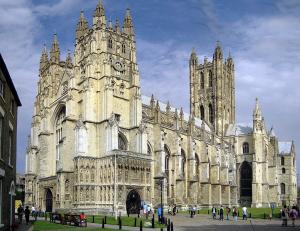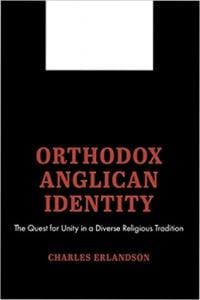 A One Sentence Definition of Anglicanism
A One Sentence Definition of Anglicanism
So far in my blogs on Anglicanism, I’ve offered a 2 word definition of Anglicanism (“Reformed Catholicism”) and explained both of these words. Over the course of the next several blogs I want to develop a more sophisticated and extended definition of Anglicanism, based on my Ph.D. thesis. Definitions of Anglicanism have become exceedingly important in contemporary Anglicanism. The dominance of liberal Anglicanism in The Episcopal Church and the Church of England has necessitated a renewed vision for Anglicanism at precisely the time in history when all identities are becoming fuzzier. In an age of fragmentation and confused authority, it’s hard even for orthodox Anglicans to answer the question, “Why be Anglican?” Too often, orthodox Anglicans assume they all mean the same thing when they refer to themselves as “Anglican,” but, as we’ll see later, they may not always be talking about the same identity. While “Reformed Catholicism” is an excellent short definition of Anglicanism, we’ll also have to be more specific.
Let me now offer “The one-sentence definition of Anglicanism,” after which I’ll explain its parts:
“Anglicanism is the life of the Catholic Church that was planted in England in the first few centuries after Christ; reshaped decisively by the English Reformation that reformed the received catholic traditions and also by the Evangelical and Catholic revivals and other historical movements of the Spirit; and that has now been inculturated into independent, global churches.”
O.K., I know it’s sort of cheating to use semi-colons, but really, they were necessary! It took me three years or more to arrive at this definition, and I’m still not happy with it, but it’s the best I can do and (I hope) a lot better than most of the vague definitions or non-definitions that others have offered.
I’ll begin with the question, “When did Anglicanism begin?” The usual answer given is that it began during the reign of Henry VIII as a result of his desire to get rid of his old wife and get a new one. I know a professor of Anglicanism who threatened to flunk any student who gave this bogus answer! The assumption is not only that Anglicanism was the creation of something new by Henry but also that it is based on a historical whim of an immoral political leader. The truth is, however, that the Church of England has a long and venerable history long before Henry and that Henry, for all of the changes he brought, did not create an entirely new church. Later, I’ll spend an entire blog discussing this question in greater detail.
In reality, Anglicanism today is an extension of the Catholic Church that was planted in England very early on. While many changes have taken place in that Church (what church hasn’t undergone sizeable changes since the early Church?), there is also an important continuity that is often missed. This Church, which had already undergone many radical revisions since the days of the early Church by the time Henry VIII was in power, was, in fact, given a decisive shape by the events of the English Reformation. While the continuity with the early Church should be acknowledged, there is also some truth in the notion that something definitive and different took place during the sixteenth century. Exactly what happened will be covered in later blogs.
It has become customary for some to tend to leave Anglicanism back in the sixteenth century, as if nothing of great import has happened in the past five centuries. This tendency is especially true among traditionalist Anglicans, but it’s not only historically naïve but also unhealthy to think in such a way. The English Church that was planted in the first century after Christ and given a definitive form by the English Reformation has also been influenced by a series of historical movements that have shaped and reshaped Anglican identity. Among these movements are the Evangelical Revival, the Oxford Movement, and the rise of the Global South.
The one-sentence definition of Anglicanism offered above is therefore based on the historical establishment of the Church in England from the first century A.D. and acknowledges the continuity that Anglicanism has with the Catholic Church wherever it is found but also with the particular church that was planted in England. On the other hand, the one-sentence definition of Anglicanism acknowledges a series of revisions that we must not ignore.
As Anglicans seek to define themselves in the 21st century, they should pay special attention to three historical contexts: the Catholic faith of the early Church or patristic era; the English Reformation, out of which the normative formularies of the Prayer Book and 39 Articles were produced and which clearly manifested the Reformed Catholic nature of Anglicanism; and the contemporary context, in which the identity of Anglicanism is being challenged from many quarters (and not just by liberalism).
Next time, I’ll look at why multiple definitions of Anglicanism are necessary and will offer a “normative” definition of Anglicanism.









